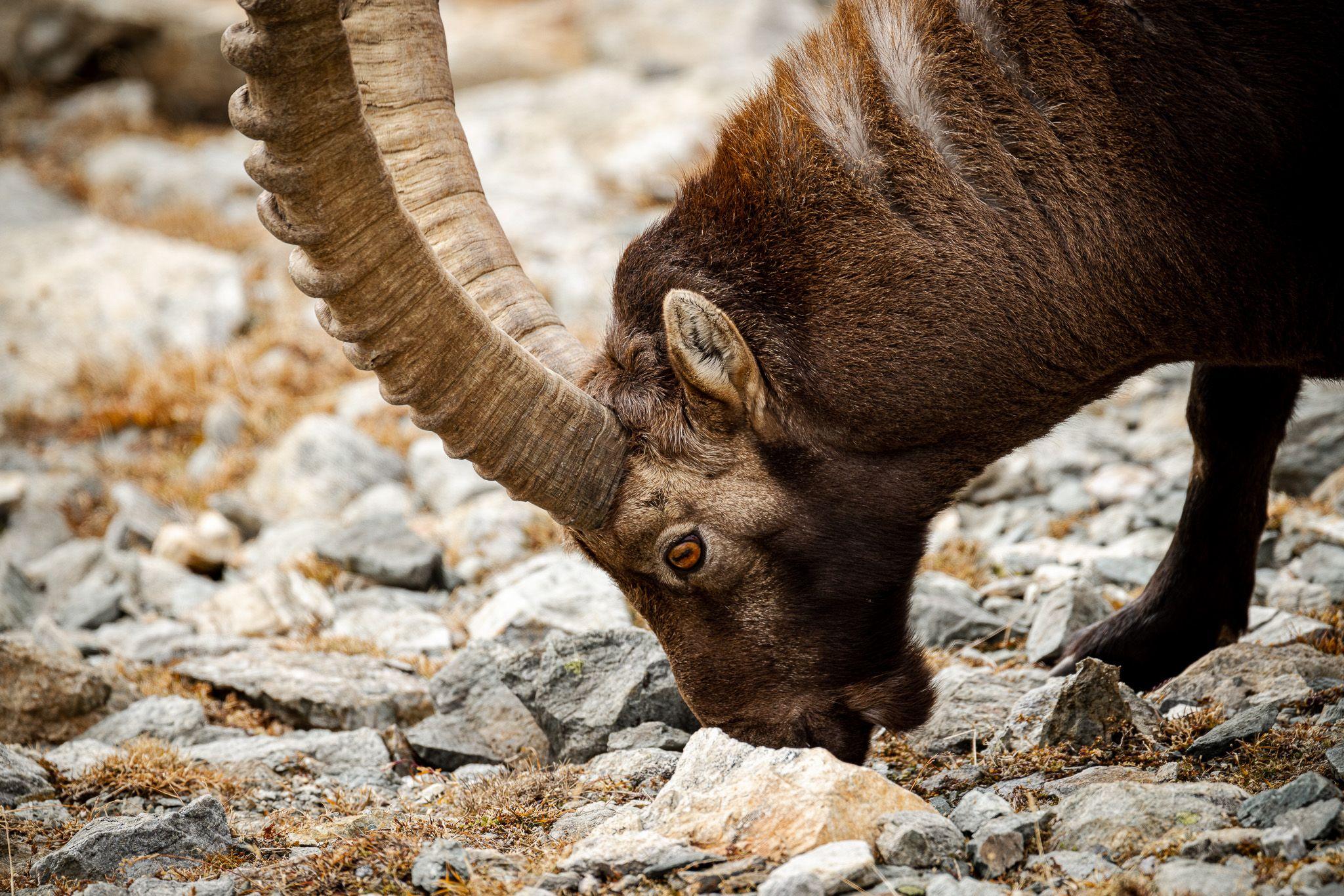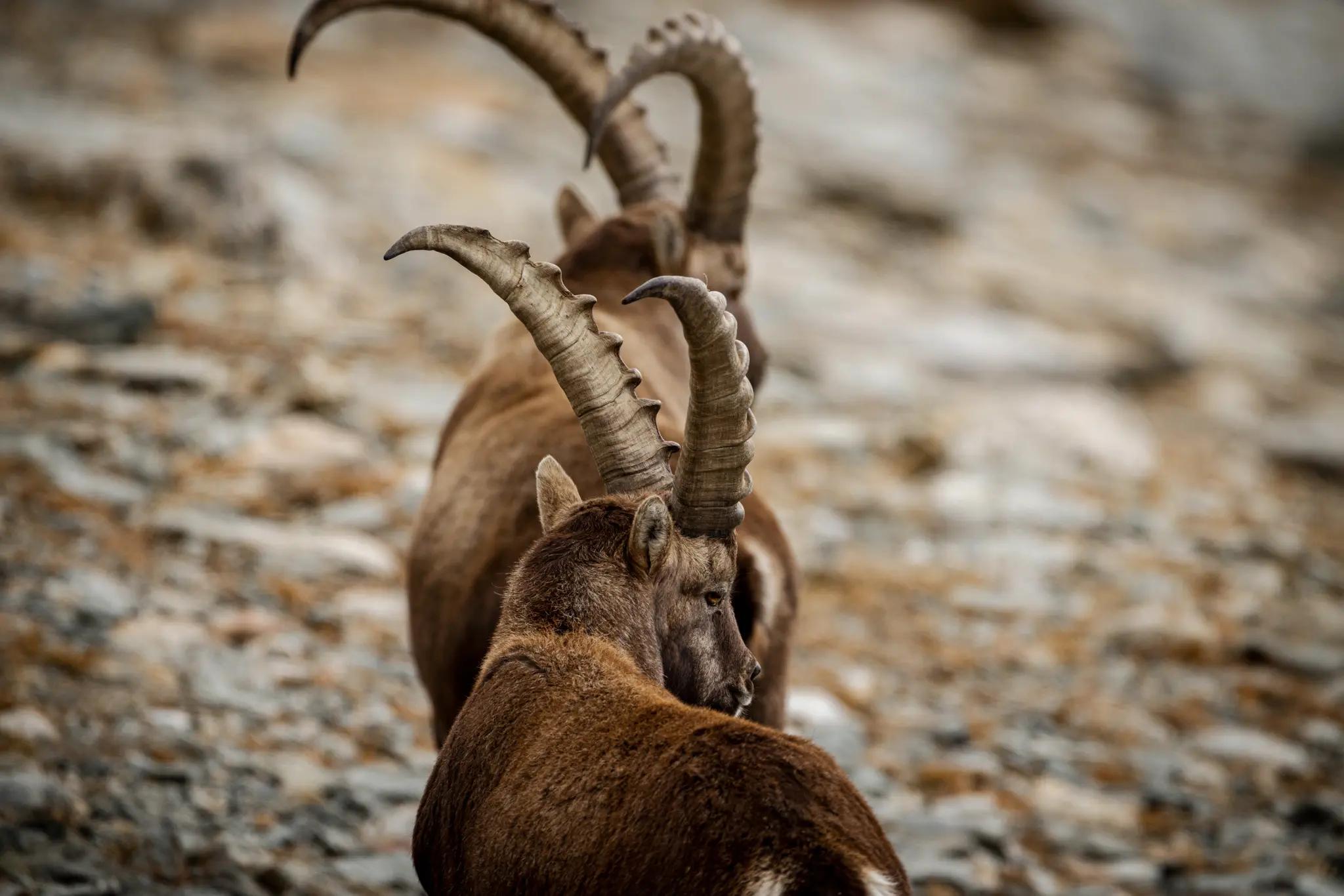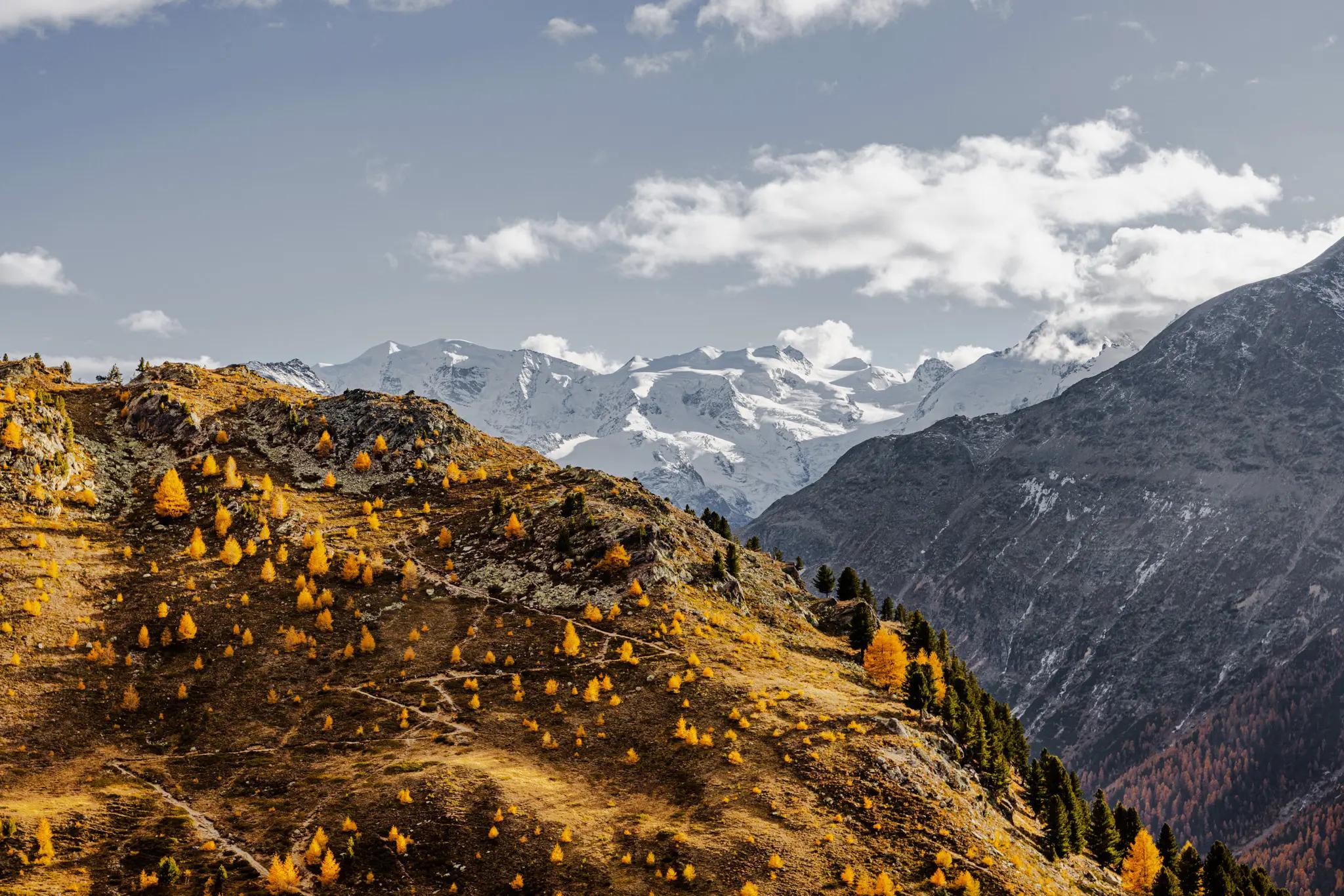How to photograph ibexes?
It doesn’t really take much. We’ll show you what tips and tricks we recommend and what equipment you need to successfully come back with some beautiful pictures.
Camera with telephoto lens
The most important thing is certainly a camera with a telephoto lens with the longest possible focal length (I would recommend a focal length of at least 200 mm, 400-800 mm is certainly optimal). The reason is quite simple: the longer the focal length, the less you have to approach the ibexes. The closer you get to the animals, the greater the risk that they will feel disturbed and move away. We humans are not exactly known for a squeamish approach to our nature anyway. Therefore, we should certainly take care not to startle these imposing animals unnecessarily and thus rob them of energy reserves that they would need for flight.
### Use a tripod
In addition to the fastest possible telephoto lens, we recommend the optional use of a tripod. The faster the telephoto lens, the heavier the setup – which forces me to do arm curling exercises to calm my burning muscles.
Playing with the depth of field
If you’ve ever taken a picture of an ibex with a smartphone, you’ll probably have noticed that it looks kind of boring afterwards. This is because smartphone cameras usually focus the entire image area and the viewer’s eye gets lost in the crowd of subjects.
Therefore, try to shoot with a rather open aperture (open aperture = low f-number). In this way, you achieve that the background is blurred and the focus is exclusively on the head of the ibex, for example. This makes your photos more interesting and valuable. Unfortunately, corresponding fast telephoto lenses are quickly quite expensive, so you may have to accept limitations here depending on the camera model and lens.
Which camera settings?
There is no one setting, but the following tips will increase your chances of taking razor-sharp pictures:
- In addition to an open aperture, use the fastest possible shutter speed. Especially when the ibexes are moving, you should not go below 1/200 s so that the photos are not blurred by the movement.
- Depending on the lighting conditions, you may need to increase the ISO value to achieve these fast shutter speeds. Keep in mind, however, that too high ISO values can lead to image noise.
- Many camera models come with a continuous shooting mode. This can be especially helpful with ibexes that are moving, as you can select the best image afterwards.
- If you use a camera with built-in flash – just leave it off. It doesn’t do anything at the distances anyway and only scares the animals. Wildlife photography and flash are definitely a no-go.
Be patient
Ibexes don’t know deadlines, they don’t have to catch the last train, and they are also rather pragmatic about eating: they eat what is growing here at the moment. Animals in high alpine regions have to manage their energy reserves and are therefore often characterized by an impressive calmness and sovereignty – a quality that most people unfortunately lack. So if you’re lucky enough to find one or more ibexes, be patient and take your time observing the animals. This may mean waiting half an hour – but with a bit of luck, this will allow you to take some beautiful photos.
Eight animals you shall be
What are “our” ibexes actually doing in the meantime?
Not much: the eight animals, one of which is still very young, have absolutely lost their cool. They lazily move a few meters here, then a few meters there, without a direct destination. One of the animals wears a transmitter on its distinctive horns, so they seem to be tracked in some way.






